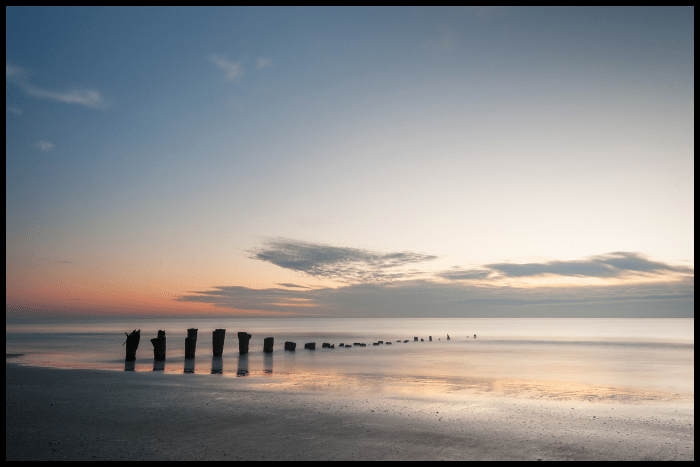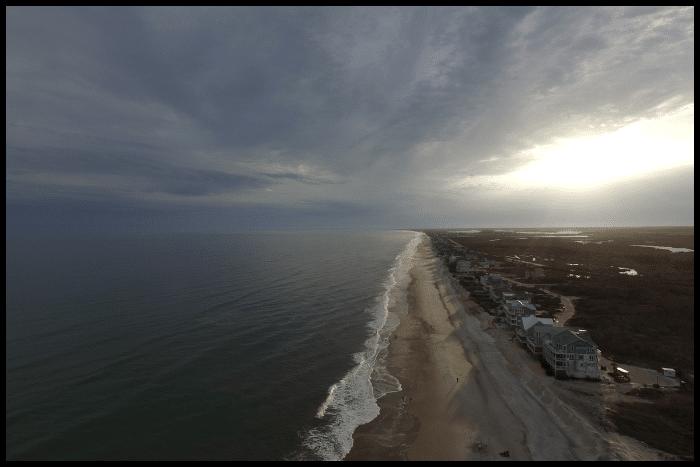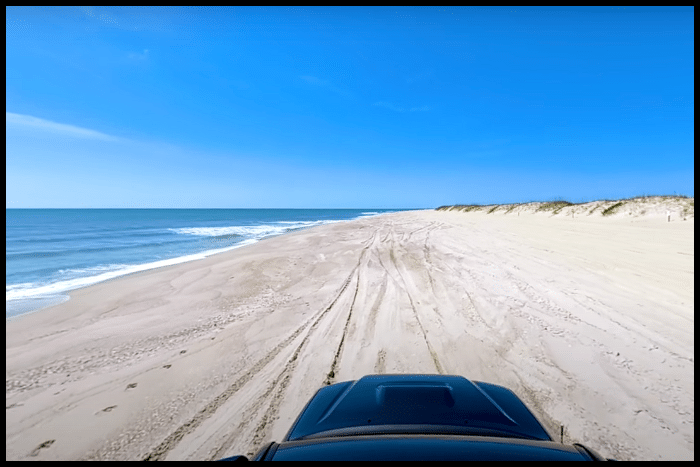North Carolina’s coast stretches for 300 miles and offers a variety of wondrous views and activities. While there are plenty of opportunities to camp along the beach, there are limited spots where you can also drive. This article will eliminate any confusion by providing a comprehensive list of North Carolina beaches where you can drive and camp.
Freeman Park, Ocracoke Island, Cape Hatteras National Seashore, Corolla Beach, Topsail Beach, Cape Lookout National Seashore, and Fort Fisher Recreation Area offer driving on the beach. Some do not allow camping due to the amount of traffic along the shore, but we’ve listed the closest campsites.
Finding out exactly which beaches you can drive and camp on in North Carolina can be confusing, but with this article, we’ve made it simple! Keep reading to find out more information about these stunning places.
Which Beaches Can You Drive and Camp on in NC?
Below we’ve detailed which beaches you can drive and camp on throughout the North Carolina coast.
Most beaches require access permits, reduced tire pressure, and awareness of hazardous conditions on the beach caused by tides.
For your safety, most of these beaches will close for driving during the winter season. Keep reading to see what these beaches offer, what permits you need, and what camping is like.
1. Freeman Park
First is Freeman Park, which offers fantastic camping and the opportunity to drive along the beach. 4X4 vehicles are allowed to drive over the beach as long as they have a valid permit.
Daily access permits are available to purchase at a pay station at the entrance to the park. They vary in price depending on the time of year you visit.
You can also purchase annual access permits if you think you’ll visit more regularly. Freeman Park also offers the opportunity to camp in a primitive setting or with full electrical hookups.
Alongside great camping, Freeman Park offers various water sports, from swimming, kayaking, fishing, and even paddleboarding when the seas calm.
Camping, driving, and other activities along Freeman Park beach can be strictly prohibited if weather conditions are poor or there are extremely high tides.

2. Ocracoke Island
Ocracoke Island forms part of North Carolina’s Outer Bank. It’s a beautiful, secluded barrier island that’s pristine beaches are famous for shelling.
It’s also one of the best locations for fishing along the East Coast, with opportunities to catch red drums and flounders. Reaching many of the beaches on Ocracoke Island is easier and much more fun to drive!
You’ll need to buy a permit from the National Park Services to drive on the sand. You can find the online application here. You can either purchase a 10-day pass or an annual one.
Camping on Ocracoke Island is equally as adventurous as driving. There are four campsites throughout Ocracoke Island that offer a variety of camping options and amenities.
All campsites require reservations, which can get busy, especially in peak season, so book in advance.
3. Cape Hatteras National Seashore
Cape Hatteras is also located along the Outer Banks of North Carolina.
The park covers 70 miles of spectacular coastline and is home to three historic lighthouses, and there’s no better way to explore these sites than driving along the beach.
To drive along these beaches, you must purchase a permit online beforehand. The application process only takes a few minutes, and you can find all the information you’ll need here.
Cape Hatteras also offers memorable camping along its shores, with affordable campgrounds available. With only four campgrounds, it’s important to book in advance.
Be aware, also, that two of these campgrounds are more rustic, which means no electricity and no hot water. However, in the summer, this shouldn’t be an issue!
4. Corolla Beach
Corolla Beach is also located on the Outer Banks and offers miles of picturesque white sand. Beach driving is only allowed on Corolla Beach and must always be behind the dunes and shoreline.
Driving on the beach does not require a permit, but parking on it does. A county-issued Beach Parking Permit lasts a week and can be purchased online here.
Due to traffic on Corolla Beach, camping is prohibited. However, three beaches are nearby: Ocean Waves, North Beach, and Currituck National Wildlife Refuge.
Please note that Corolla Beach is known for its wild horses. Ensure you drive cautiously and keep a safe distance if you see any.
I also have an in-depth Outer Banks Beach Camping Guide if you wish to explore more areas.
5. Topsail Beach
Topsail Beach is a charming coastal town located on Topsail Island. It offers an abundance of water-based activities such as surfing, shelling, fishing, and even dolphin watching.
Topsail beach is scenic and wide, making it perfect for beach driving. Driving on the beach is only allowed for fishing purposes, and any driver must acquire a permit beforehand.
Weekly and seasonal permits are sold at the Topsail Beach Police and Fire Department and are relatively inexpensive.
Camping is not allowed directly on Topsail Beach, but several beach camping sites are nearby.
We’d recommend checking out Surf City Family Campground, which is only 5 miles from Topsail beach and offers easy access to other beaches located on the island.
Do check out my article on the Beach Camping Laws in the US for a list of can and cannot for every state.

6. Cape Lookout National Seashore
Another great beach spot to combine camping and driving is located along the southern Outer Banks at Cape Lookout National Seashore.
The Lookout is a prime location for birdwatching, with over 100 different species of birds inhabiting the area, including ospreys and pelicans.
To drive on the beach, you’ll need to secure a permit. You can complete this all online by following some easy steps here.
You can only purchase one type of permit, which secures you access for the calendar year. Be aware that Cape Lookout is closed between January and March due to weather conditions.
Cape Lookout provides both front and backcountry camping. You’ll need to secure a permit for backcountry, while front-country camping must be in 1 of the 4 designated campgrounds.
It’s important to note that there is no vehicle access to the backcountry camping sites, so be prepared.
7. Fort Fisher Recreation Area
Lastly, we’d recommend checking out Fort Fisher Recreation Area. The park is named after the historic civil war port that once protected the area.
The beach at Fort Fisher stretches for 6 miles with glorious views over the Atlantic, made even better when you know you can drive across it.
You can purchase weekday, weekend, or annual passes that range from $20 to $150. Camping is also available at Fort Fisher, with various set-ups, from full electrical hookups to primitive camping sites.
My list of tips on primitive camping will be a handy read.
Fort Fisher offers some fantastic hiking if you get sick of the beach. Check out the Basin and Sand Live Oak trails!

Final Thoughts
We hope this article has given you all the information you need for your beach driving and camping adventure.
Before you pack up your gear, it’s always important to check that your vehicle meets the beach’s requirements. Without an efficient 4X4, you could get stranded on the sand.
Finally, with all camping, we ask you to remember to pack in and out. This supports eco-tourism and protects natural habitats.
